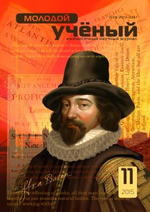Authentic materials are used to recreate a natural atmosphere of another language. Authentic materials include books, newspapers, magazines, tutorials, leaflets, menus, maps, postcards, photographs, tickets, etc.
Authentic materials are spoken or written materials not specially written for classroom use but taken from the media or real life [4]. Authentic materials are divided into:
- audio (songs, radio news / talk show / advertising, etc.);
- visual (picture and post cards, graphs and diagrams, posters, illustrations from magazines, etc.);
- audio-visual (video, video clips, etc.);
- printed (books, newspaper articles, tourist information leaflets, informational brochures, flyers, etc.).
From a linguistic point of view, authentic materials are characterized by peculiar vocabulary. They have a lot of:
- pronouns;
- particles;
- interjections;
- emotionally colored words;
- phrasal verbs;
- phraseological units, idioms.
Authentic materials encourage:
- language learning motivation;
- cultural awareness of the target language;
- mastery of a foreign language as a means of communication;
- contextualization of the language [1, 2, 3, 5].
Criteria for choosing authentic materials:
- relevance to the syllabus;
- correspondence with the learners’ age;
- correspondence with the learners’ language level;
- topic interest [6].
Working with a newspaper at foreign language classes, a teacher can use the following tasks:
- Look through the newspaper and say where and when it was published?
- Look at the illustrations in the newspaper. To which news and evens can they be related? Give your heading to these news and events.
- Look through the newspaper and say which headings have attracted your attention. Why? What can be the contents of this article?
- Which article would you recommend for someone who is interested in sports, politics, fashion, etc.
- Read the questions and say which article might have an answer to them.
- Look through the article and find proper names, geographical names, dates, etc.
- Look through the article and find vocabulary which relates to the topic under study.
- Read the article and find phrasal verbs. What is their meaning?
- Arrange the events in chronological order according to the article.
- Read the article and retell it.
- If you were the author of the article, what would you add? What would you delete?
- If you were the editor of this newspaper, which news would you cover?
- Is illustration important for a newspaper? Does it affect the sale level?
- Write your article to this newspaper.
As authentic materials contain difficult vocabulary and structure, they should not be used as the main means of teaching for beginning learners. The lack of vocabulary and grammar knowledge can demotivate, frustrate and discourage learners from learning.
Thus, authentic materials have a noticeable contribution in language learning. They raise learners’ interest, increase learning motivation, help to realize the relationship between the language that is learnt in the class and the language used in the foreign language environment.
References:
1. Куимова М. В. Обучение устной монологической речи с опорой на аутентичный письменный текст (английский язык, неязыковой вуз). Автореф. дис. … канд.пед.наук. –Ярославль, 2005. 18 с.
2. Куимова М. В. Обучение устной монологической речи с опорой на аутентичный письменный текст (английский язык, неязыковой вуз). Дис. … канд.пед.наук, Ярославль, 2005. 165 с.
3. Al Azri R. H., Al-Rashdi M. H. The Effect of using authentic materials in teaching // International journal of scientific & technology research. 2014. Vol. 3, Iss. 10. Pp. 249–254.
4. Broughton G., Brumfit Ch., Flavell R., Hill P., Pincas A. Teaching English as a foreign language. London and New York: Routledge, 1980. 257 p.
5. Gebhard J. G. Teaching English as a foreign or second language. USA: University of Michigan Press. 2006. Second Edition.
6. Kelly Ch., Kelly L., Offner M., Vorland B. Effective ways to use authentic materials with ESL/EFL students // The Internet TESL Journal, 2002. Vol. VIII, No. 11.







